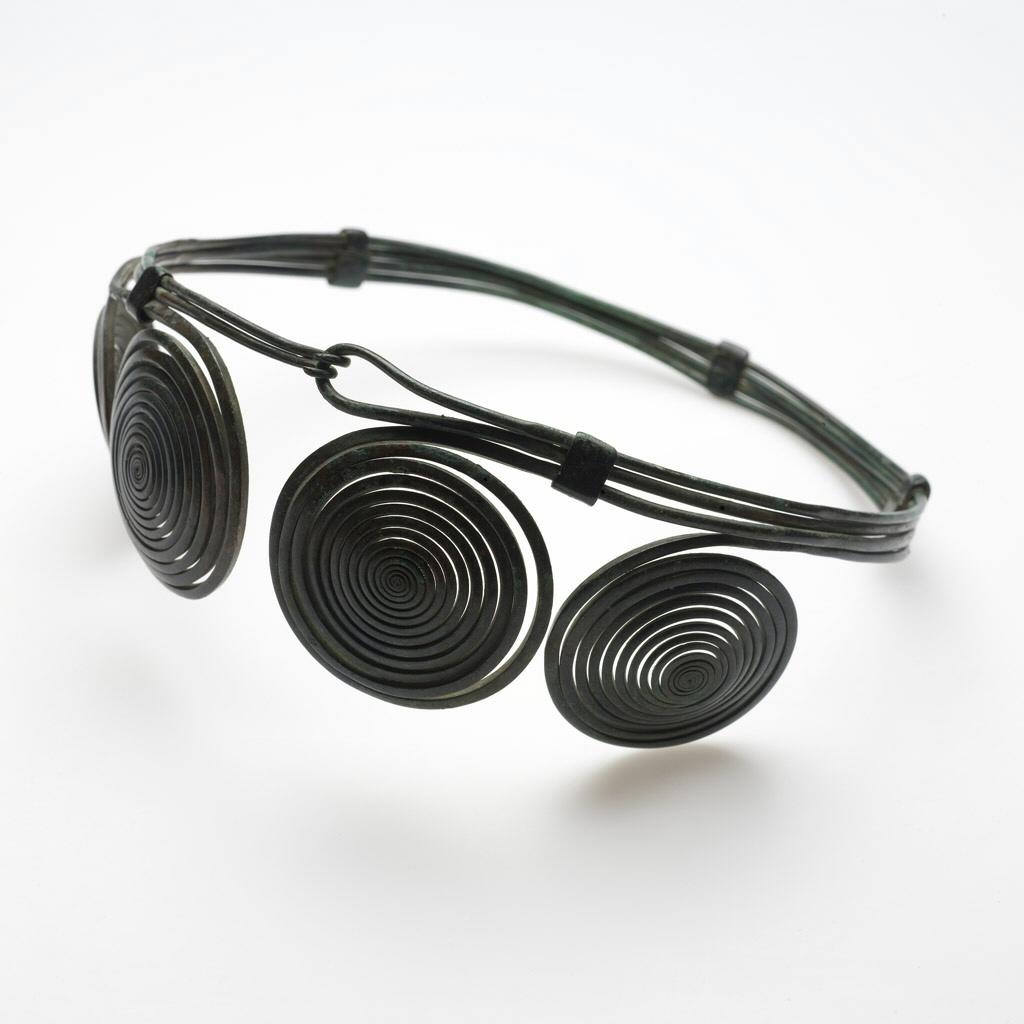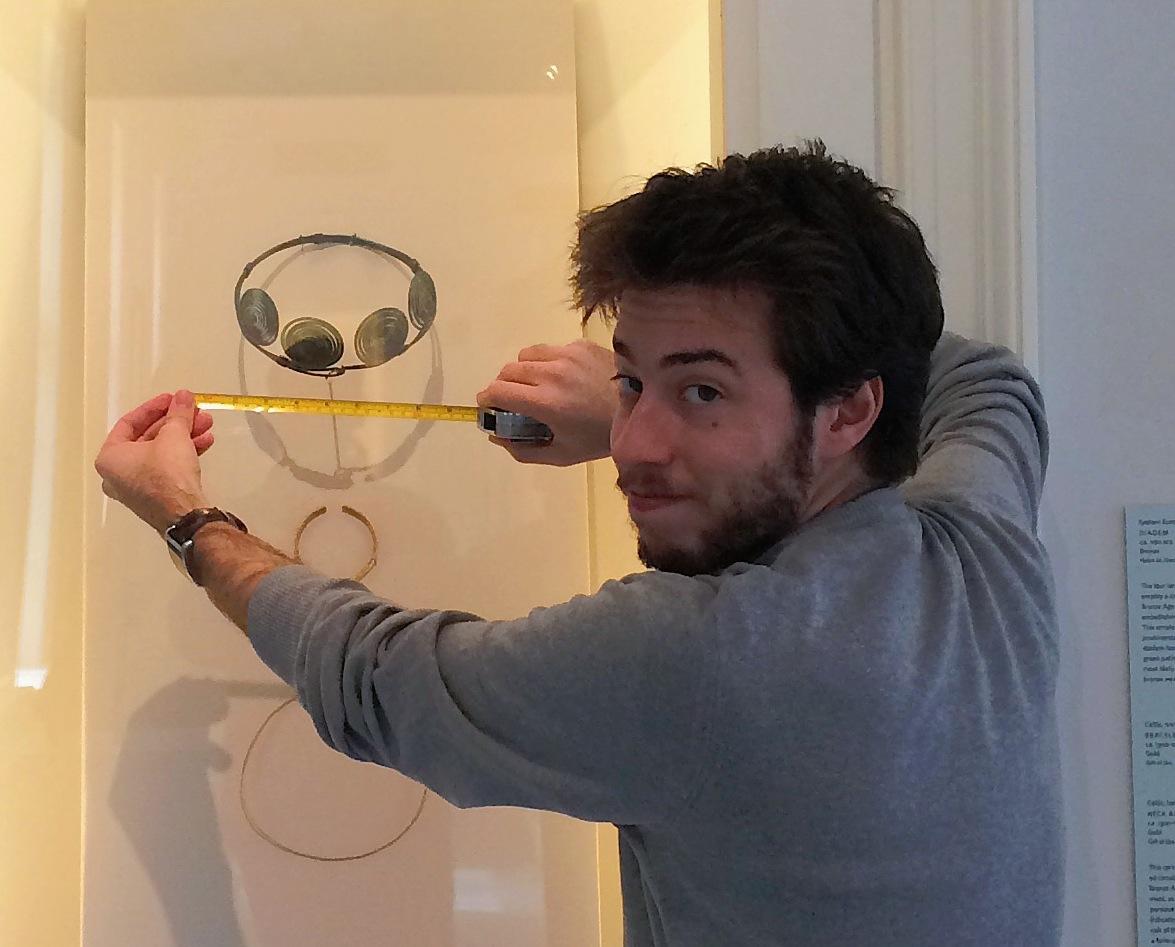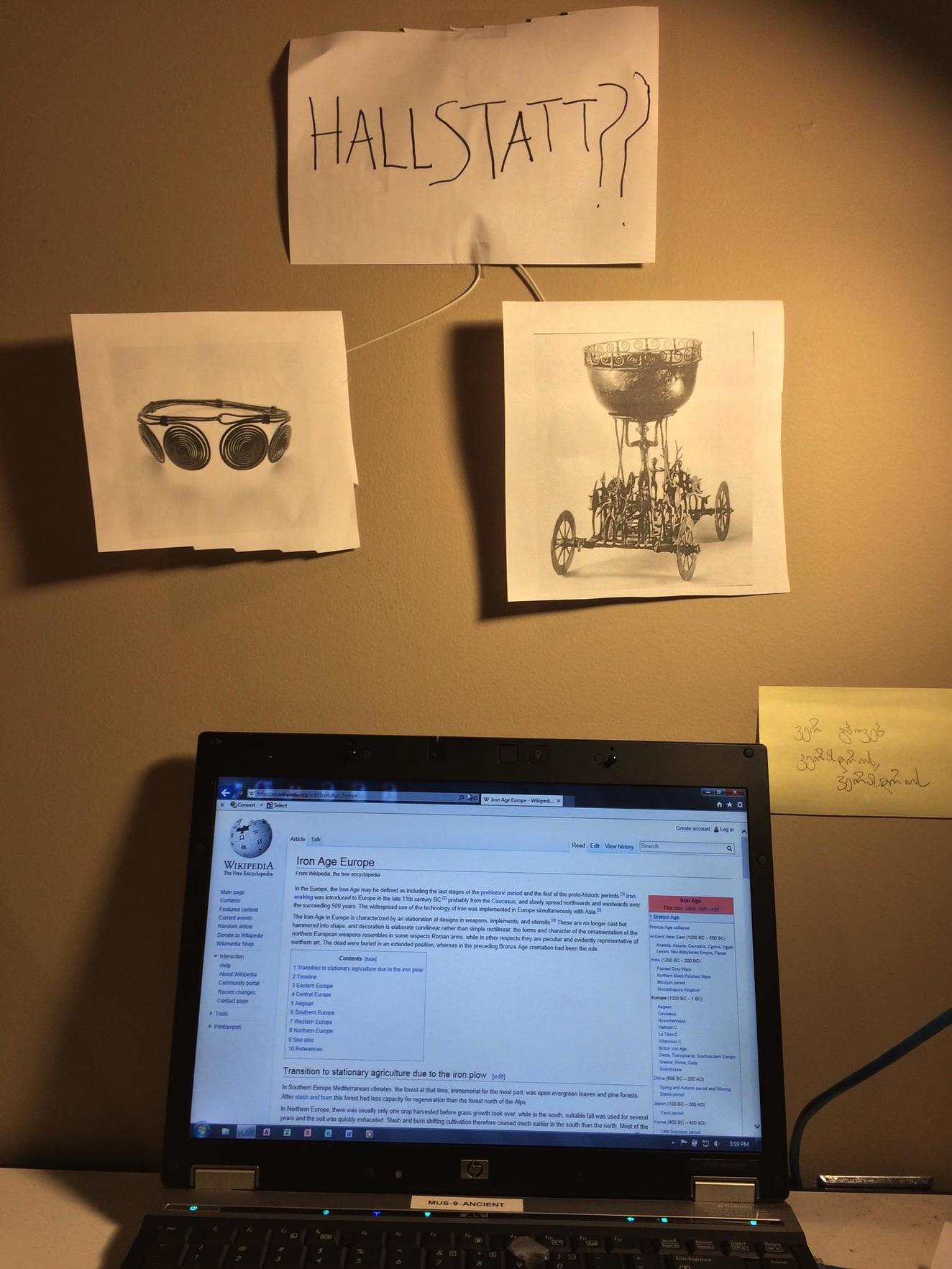“Archaeologists are like detectives” is a cliché that gets pulled out every holiday season when archaeologists visit their families and have to explain what it is exactly they’re doing with their lives. Unlike some other clichés, it’s absolutely true. Depending on the time period in question, archaeologists have a range of techniques and resources they can use to understand an object.
The majority of RISD’s ancient art collection comes from the Egyptians, Greeks, or Romans—all civilizations that wrote. When an archaeologist wants to study a scene painted on a Greek vase, for example, he or she can go right to the Greeks themselves for insight: ancient mythology, literature, and firsthand histories can all provide clues and context that, with the archaeologist’s own observations, tell us more about the object. But what about objects from societies that didn’t write?
Scholars use the term “prehistory” to refer to the time period before a culture adopted writing. Calling something “prehistoric” tends to call to mind images of cavemen (or, more heinously, dinosaurs), but the definition of prehistory changes from place to place as writing was introduced: Egyptian prehistory ends about 5,000 years ago; Greek and Chinese, a little more than 3,000; Russian, 1,000. As we’ll soon see, a prehistoric culture is not necessarily a primitive one.
The object featured here, a diadem from central Europe (acquisition number 2002.102), was made in prehistory. The diadem is beautiful and fascinating in its own right, but will also make for an excellent tool to demonstrate the skills archaeologists use to understand prehistoric peoples and things.
Context: An object’s context is where it was found and what it was found with. Context is the lens through which all other observations are refracted. Let’s say you have an arrowhead. Taken in isolation, you can only say that someone, somewhere, used arrows—probably the least archaeologically significant conclusion ever reached. But if you know where it was found, you can say more about it: think about the different implications of finding an arrowhead embedded in a city wall, or placed neatly next to a body in a grave, or embedded in the spinal column of that body.
Methodical, scientific archaeology is a relatively young discipline, and RISD’s collection is very old; not all of our objects have a meticulously documented context, including this diadem. While we have no reason to doubt the claim that it’s from Iron Age central Europe, we can use other tools to back that up.
Description: Unlike scientists, archaeologists can’t test their findings in experiments; they can only describe them in as detailed a way as possible. Every bit of information about an object’s physical description is a potential clue about its manufacture, use, or purpose.
Materials are a good starting point for describing an object. This diadem is made of bronze, which reveals a lot about it. Bronze is an alloy of copper and tin. Copper is fairly abundant, but tin is only mined in a few places in the world. For the tin in this diadem to get to central Europe, the society who made it would have had to participate in a transcontinental trade network, which implies a certain level of social sophistication. Furthermore, working any metal requires a great deal of skill and energy, working an alloy even more so. This diadem only consists of four wires and five bands that hold them together to form a loop the size of an adult’s head. Two of the wires end in spirals, while the other two are looped to form a clasp. Not only does the knowledge of metallurgy indicate serious technical skills, but this elegant design and use of materials also demonstrates artistic vision. Given the effort required to get the copper and tin to one place, to combine them, and to shape them into a beautiful item, it is likely this was a very valuable object.
Comparison: When an object doesn’t have much context, archaeologists can learn more about it by comparing it to other, better-understood objects. With this particular object, we can search for comparanda (from the Latin for “things to be compared”) starting with the lead that it’s from the central European Iron Age. A search of these terms (feel free to do your own) reveals all sorts of objects, though some resemble our object more than others, and were also made in bronze with fine workmanship and curvy, spiral-based designs. You can some examples this video, taken from the website of the Archäologiemuseum Schloss Eggenberg in Austria.
You may have caught that the narrator of the video mentioned the word “Hallstatt.” The objects in that section of the video are indicative of the Hallstatt culture; it’s likely our diadem is as well.
It’s important to note what we mean by “culture.” In most instances, a culture is a group of people united by sharing any combination of such things as language, origin, beliefs, or values—concepts that are transmitted through speech or writing. Since speech does not leave direct physical traces and writing was not invented yet, archaeologists working with prehistoric objects do not have the tools to identify distinct cultures as we think of them. An archaeological culture, however, is a group of people connected by their use of similar objects. For example, if archaeologists were to dig up modern American houses and apartments, they’d find similar things in all houses, like tables and chairs and pots and pans. Archaeologically, this would be one North American culture (“Ikea culture” may be more a bit more accurate). Of course, the cookware and furniture wouldn’t indicate whether the people who used it were black or white, were Hindus or Muslims, or spoke English or Spanish. So it is with prehistory: when we refer to the Hallstatt culture we don’t mean the same thing as when we refer to Samoan, Syrian, or Swiss culture.
The Hallstatt culture gets its name from a village in Austria, where the objects from the culture were first found and described. Hallstatt objects first appear in what is now Austria around 1100 BCE. Over the next 600 years, Hallstatt objects became the dominant material culture throughout central and western Europe. The La Tène culture, the archaeological culture associated with the Celtic language–speaking peoples of western Europe, is believed to have developed from the Halstatt. Now we can see how this diadem fits into the wider story of human history.
It’s impossible to know exactly what happened in the past, especially prehistory. Archaeologists can only guess, but we have excellent tools to help us. By using context, description, and comparison, this diadem becomes more than a piece of metal; it is a relic from a sophisticated culture that made and valued art, a long-gone society made a little less so by archaeology.
Jonathan Migliori ( BA, Archaeology and the Ancient World, Medieval Cultures, and Classics, Brown University, 2011, MA Archaeology, University of Durham 2013) is currently an intern in the Ancient Art and Education departments at the RISD Museum and a member of the RISD CE faculty.


